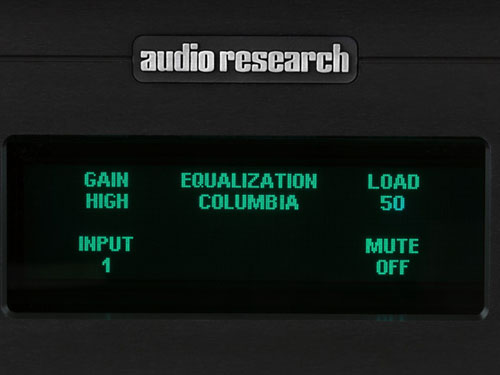Taking It to the Next Level: Getting Serious About Optimizing Replay on a Record-by-Record Basis
There are those -- the EQ fundamentalists -- who insist that every record made after 1956 (which happens to embrace the entire stereo era) was produced using the RIAA standard. Clearly, the great analog God up in the sky simply flicked a switch and lo it was so. This belief is particularly convenient in that it obviates the need to incorporate any switchable EQ facility into the fragile signal path of the phono stage you are designing; it allows for fuss-free record replay and a blanket adherence to this point of view also obviates the need to address, discuss or deal with the issue -- especially attractive if you’ve already nailed your colors to the “RIAA is everywhere” mast. Unfortunately, common sense, human nature and the all too audible evidence tell us that record companies actually continued to use their existing equipment and their own EQ curves, making non-RIAA discs long after 1956. In some cases, that practice continued right up to the advent of CD and the demise of large-scale record production. Decca and EMI continued to use their proprietary curves well into the 1970s, while DGG seem to have never adopted the RIAA standard. Examples of post ’56 non-RIAA pressings from other sources such as Columbia, Atlantic and Impulse! abound, covering every genre from rock and pop through jazz and classical. And just to really confuse things, occasionally even the serial dissenters produced an RIAA-compliant pressing. But the real question is do you need to worry about replay EQ? If you solely listen to 180-gram audiophile or current pressings, the answer is no. Everything produced these days is RIAA compliant -- the standard that’s built into every non-switchable phono stage. But, if you have an extensive collection of '60s and '70s pressings, if you buy secondhand records and especially if you are a collector of older first pressings and mono discs, then the answer is definitely yes. Yes, your Shaded Dogs will sound fine, because RCA pressings were always RIAA, but those pricey Decca SXL widebands you’ve shelled out for, all the collectable EMI classical discs, an awful lot of jazz (especially the preferred mono pressings) and a surprising amount of pop music will only sound at its best -- and justify the prices paid for ownership -- if you have a switchable EQ facility. Oh -- and it’s essential to make just about anything that DGG pressed in Germany even remotely listenable. The good news is that, increasingly the adjustment itself is child’s play. Most modern phono stages that offer the facility rely on a simple switch that allows you to select between several different commonly used curves. There are of course as many curves as there were record labels, but many are extremely closely related, allowing the use of generic values that still offer significantly greater accuracy than the RIAA standard. Extensive lists and crib sheets do exist, but in practice consistency was patchy even across a single label, especially if it pressed in more than one country, so adjustment really is a case of suck it and see. Fortunately, the differences are far from subtle, with the correct EQ delivering not just a sense of tonal rightness, but a rhythmic poise and sense of performance and drama that’s unmistakable. Don’t be put off by the nay-sayers; if it sounds better, it is better. In fact, it’s remarkable just how quickly you come to recognize correct (and incorrect) replay EQ. If you are serious about getting the best out of older records, a phono stage with switchable EQ curves is essential. Like everything else, the simpler the process, the more you’ll use it. The Audio Research Reference Phono 2 SE and Zanden Model 1300, offering three and five curves respectively, are perhaps the classic examples, but there are more affordable (if less tractable) examples from VAS and Graham Slee amongst others.
|

 n increasing
number of phono stages are now offering variable or switchable replay equalization -- more
curves than just the familiar RIAA standard that was theoretically established in the late
'50s, at the dawn of the stereo age. The mechanics of record replay demand that bass is
rolled off and treble boosted when cutting discs, those adjustments reversed on replay.
Clearly, accurate reproduction depends on precisely matching those shifts and the
subsequent reinstatement or equalization (EQ). Any difference between cut and boost and
the signal gets bent out of shape. The problem lies in the fact that initially each record
company adopted its own replay curve, each slightly different. This confused and confusing
situation was far from ideal for customers buying discs or the manufacturers making
equipment to replay them, so in 1956 the industry agreed to adopt the RIAA curve as a de
facto standard -- at least in theory.
n increasing
number of phono stages are now offering variable or switchable replay equalization -- more
curves than just the familiar RIAA standard that was theoretically established in the late
'50s, at the dawn of the stereo age. The mechanics of record replay demand that bass is
rolled off and treble boosted when cutting discs, those adjustments reversed on replay.
Clearly, accurate reproduction depends on precisely matching those shifts and the
subsequent reinstatement or equalization (EQ). Any difference between cut and boost and
the signal gets bent out of shape. The problem lies in the fact that initially each record
company adopted its own replay curve, each slightly different. This confused and confusing
situation was far from ideal for customers buying discs or the manufacturers making
equipment to replay them, so in 1956 the industry agreed to adopt the RIAA curve as a de
facto standard -- at least in theory.